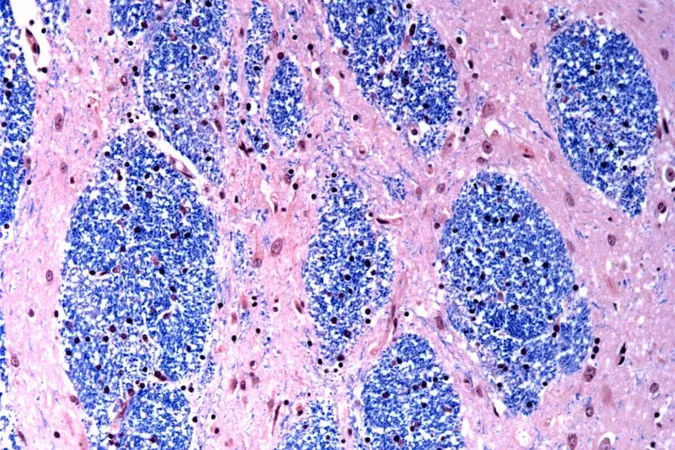
Groundbreaking Discovery Reveals Late Onset Mystery Behind Huntington's Disease
2025-01-17
Author: Ying
Unlocking the Genetic Puzzle
At the core of Huntington’s disease lies a mutation in the HTT gene characterized by an abnormally high number of CAG repeats in its DNA sequence. While healthy individuals possess between 15 to 35 repeats, those suffering from Huntington's often show 40 or more. For years, the medical community struggled to explain the puzzle of why symptoms could remain dormant for decades despite the existing genetic mutation.
New revelations from researchers at the Broad Institute of MIT and Harvard offer a compelling explanation. They found that CAG repeat expansions remain relatively innocuous for the initial years but become increasingly harmful as they grow longer over time. Once these repeats exceed approximately 150, the production of toxic proteins begins, leading to the degeneration of neurons in critical areas of the brain. This explains the typical onset of the disease in middle adulthood, despite being genetically predisposed from a young age.
Manifestations of the Condition
The neurological deterioration caused by Huntington's disease manifests in various debilitating symptoms, which worsen over a time span of 10 to 25 years. Key symptoms include: - Involuntary movements, often characterized by twitches and jerks. - Progressive cognitive decline, affecting memory, judgment, and decision-making capacities. - Emotional disturbances such as depression, irritability, and extreme mood swings.
Currently, around 41,000 Americans are living with Huntington's disease, while countless others carry the mutation and anxiously await its onset.
The Path to New Treatments
This innovative research holds hope for potentially therapeutic interventions. As it stands, current treatments solely alleviate symptoms rather than addressing the root cause—the faulty gene. However, experimental drugs aiming to lower toxic protein levels from the mutated HTT gene have encountered hurdles in clinical trials.
This study suggests a more targeted approach—the possibility of inhibiting the very DNA expansion process responsible for the disease. By slowing down or preventing the growth of CAG repeats, scientists may one day be able to delay or even prevent the emergence of Huntington’s symptoms altogether. Leading pharmaceutical companies have begun investigating this promising avenue, although extensive research is still required.
Dr. Sabina Berretta, a senior author of the study, emphasized the findings' significance: “The longer the repeats, the earlier in life the disease onset will occur.”
Challenges and Skepticism Ahead
Despite the significant strides made in understanding Huntington's disease, the new role of large CAG expansions within the scientific community faces skepticism. Earlier studies predominantly focused on shorter CAG repeat expansions. Nonetheless, the evidence presented in the current research indicates that those with over 150 CAG repeats are critical in understanding this disorder fully. This has sparked a renewed interest and paved the way for a transformative phase in Huntington's disease research.
Dr. Mark Mehler from the Albert Einstein College of Medicine recognizes the study as a “landmark” development that could address long-standing questions about the disease and influence future research directions.
As the medical community absorbs these findings, the hope is that patients and families affected by Huntington's disease will one day see viable treatments that truly reckon with the condition's genetic foundations. In a world where progress is essential, this recent study offers a beacon of optimism for those facing the grim realities of Huntington's disease.


 Brasil (PT)
Brasil (PT)
 Canada (EN)
Canada (EN)
 Chile (ES)
Chile (ES)
 Česko (CS)
Česko (CS)
 대한민국 (KO)
대한민국 (KO)
 España (ES)
España (ES)
 France (FR)
France (FR)
 Hong Kong (EN)
Hong Kong (EN)
 Italia (IT)
Italia (IT)
 日本 (JA)
日本 (JA)
 Magyarország (HU)
Magyarország (HU)
 Norge (NO)
Norge (NO)
 Polska (PL)
Polska (PL)
 Schweiz (DE)
Schweiz (DE)
 Singapore (EN)
Singapore (EN)
 Sverige (SV)
Sverige (SV)
 Suomi (FI)
Suomi (FI)
 Türkiye (TR)
Türkiye (TR)
 الإمارات العربية المتحدة (AR)
الإمارات العربية المتحدة (AR)